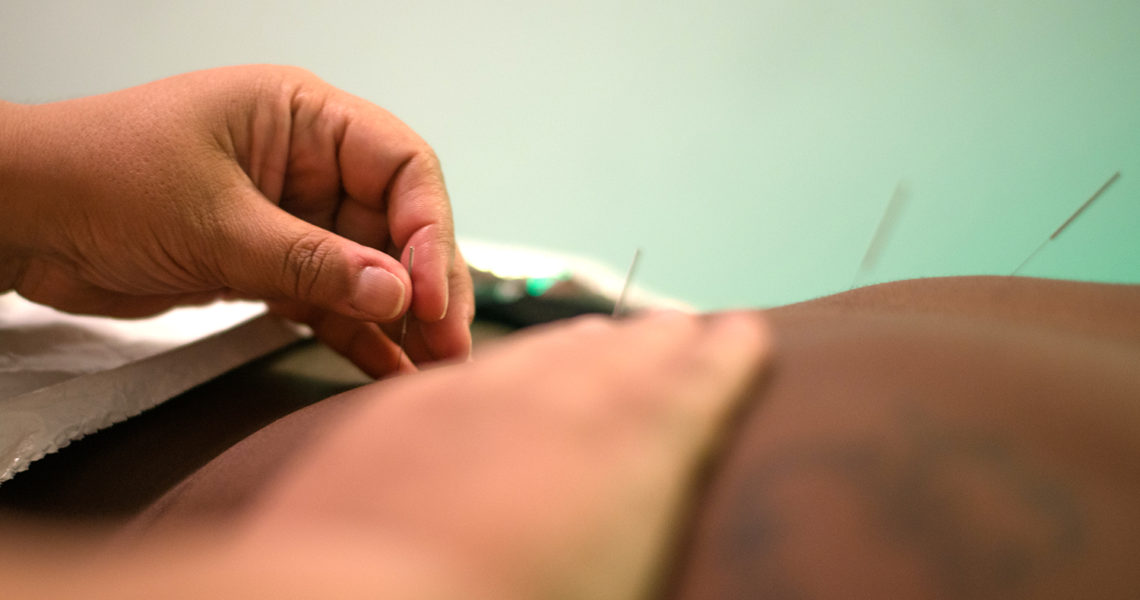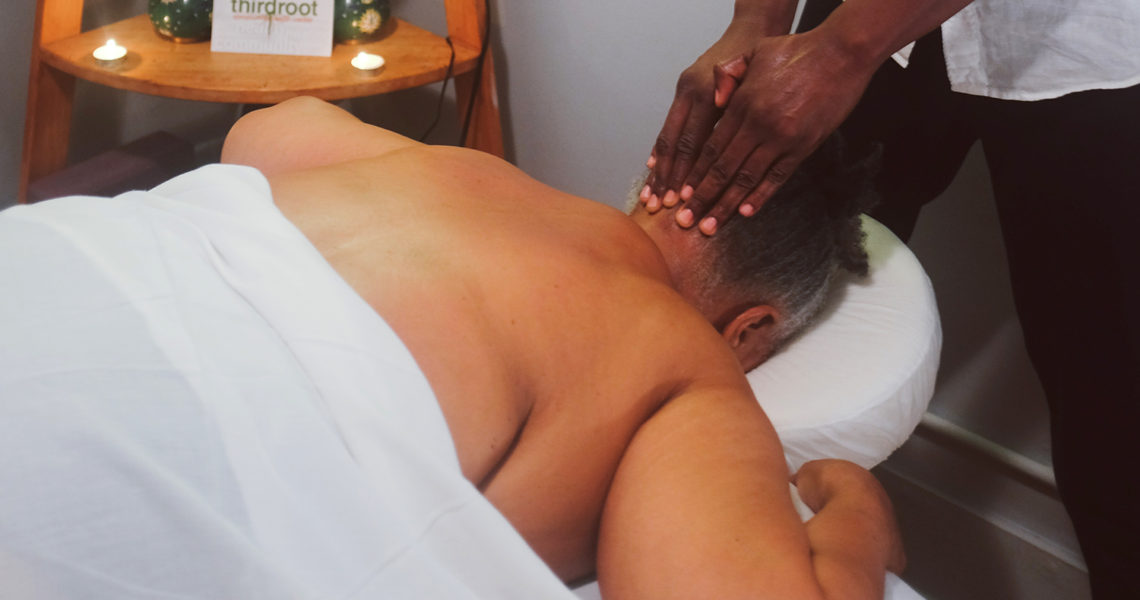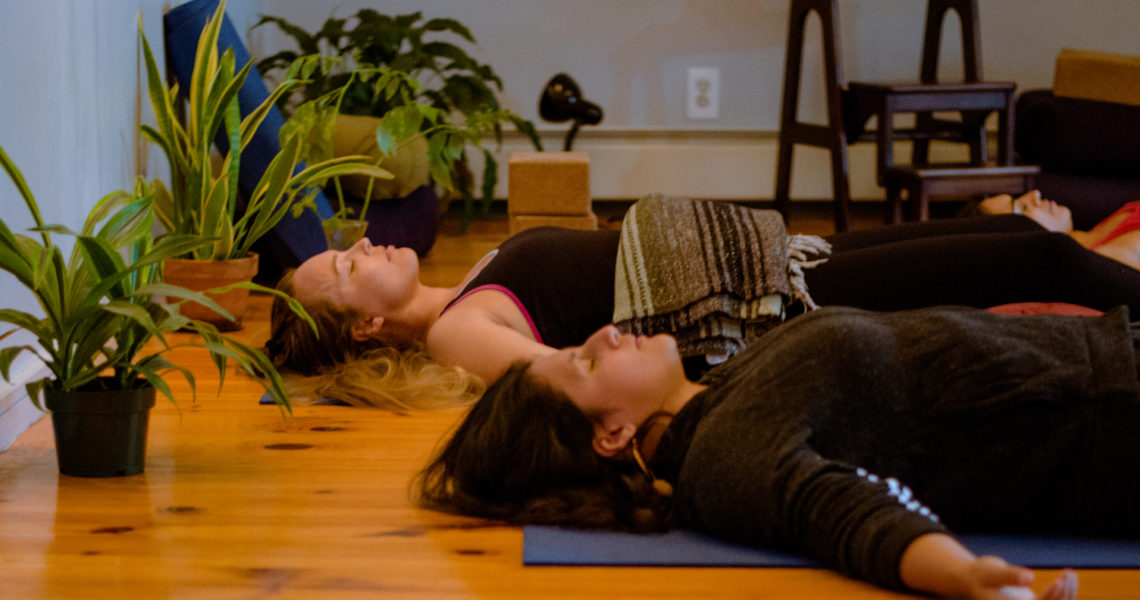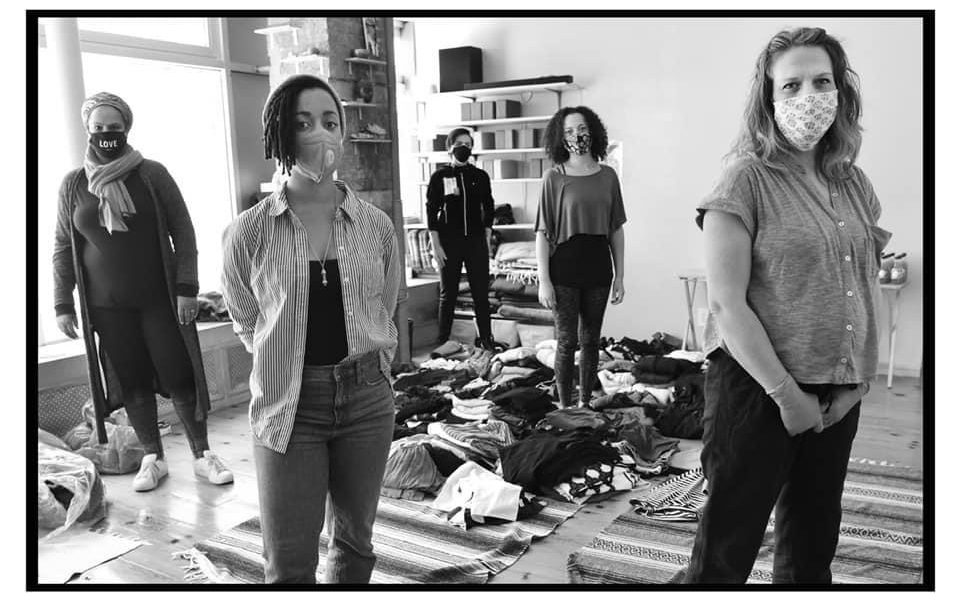Acupuncture FAQ’s
Acupuncture works with the subtle energies of the body. When first experiencing acupuncture, it’s normal to feel the needles as they enter the points on your body. Because acupuncture needles are much finer than needles used in medical settings, the sensation is much milder and sometimes undetectable. You may experience a brief moment of discomfort, muscle twitch, or sensation followed by mild tingling. Many times, patients don’t feel anything and find the treatment quite relaxing, some even fall asleep. If any points feel uncomfortable, notify your practitioner and they can make adjustments to ease your treatment. You should not experience pain or discomfort after all needles are inserted, however you may feel sensations moving through your body as energy circulates within your body.
Before you arrive, you’ll complete a health history and consent form. When you arrive, your practitioner will take a verbal history of health habits and acute issues. The practitioner may then look at your tongue and feel your pulse. These are all traditional diagnostic methods. Once your practitioner diagnoses you, they begin treatment.
Once you’ve checked in with your practitioner about how you’re doing you can lie down on a treatment table or recline in a zero-gravity chair. The practitioner then cleans the points with alcohol and begins inserting needles in the pre-designated points. At any time if you have discomfort or emerging needs during treatment we encourage you tell your practitioner. The practitioners goal is to make the experience comfortable as well as healing, and they’re happy to accommodate your individual needs.
Needles commonly stay in 20 – 40 minutes as you rest, then the practitioner removes them. The practitioner may stimulate the needles via hand or using heat therapy. Afterward your practitioner may suggest dietary modifications, wellness techniques or herbal medicine, to sustainably support your healing.
Depending on the practitioner’s assessment treatments may include:
- Moxibustion or Moxa – a technique using dried mugwort compressed, ignited, and used to warm acupoints and channels. Moxa helps increase the action of specific points as well as treat stagnation, cold, and weakness in different areas.
- Tui Na – a system of massage originating in China mostly performed over clothes, involving the manipulation of Qi along pathways to relieve stagnation, relieve pain, and provide full-body support.
- Cupping – the use of suction created in hollow cups over areas of stagnation to ease movement, function, and pain.
- Energy therapy techniques like reiki.
- Electrical stimulation – a small electrical current passed between pairs of acupuncture needles, primarily to alleviate pain
Depending on the duration, severity, and nature of your illness, and your own availability, your practitioner can recommend a frequency and duration of your treatment. They can give you a general idea of this on your first visit.
Wear clothes that are comfortable, lose fitting, and allow the practitioner to access your arms and legs. Or come with a change of clothes.
In community acupuncture we treat patients together in our community space while they rest in zero gravity reclining chairs. We treat using acu-points on the arms, legs, and head. In private sessions we treat individual patients on treatment tables and are able to access more body areas. We may also utilize other modalities including cupping, gua sha, and moxa.
Community Acu is useful for calming the nervous system, aligning energy channels, and reducing cravings and anxiety.
Tuina is a form of Chinese massage incorporating acupoints and meridians. Depending on the diagnosis, pressure can be light or deep, with slow or fast strokes. Gua Sha is an East Asian medical practice that utilizes a blunt-edged instrument rubbed against specific acupoints and channels to release stagnation and pain. The short, rubbing strokes create warmth and bring the stagnation to the skin surface in the form of non-painful bruising which fades in 2-3 days. Practitioners performing either of these techniques will check in with their patient and get consent during the course of the treatment. For more information about either technique, speak to your practitioner.
Yoga FAQ’s
To put your mind at ease, we gather our most asked questions regarding Yoga.
To make sure you have the support you need for your practice, check out this props guide from yoga teacher Calia Marshall. Blankets, towels, pillows, and stacks of books will do.
Students of every level are welcome to attend open level yoga classes. We encourage students to maintain an open-minded attitude, as some poses may be more or less familiar to students, but modifications are always offered. If it is your first time in a yoga class, please notify your teacher!
While Third Root welcomes students in all classes, we offer a number of classes specifically for marginalized communities. These classes are led by people from that community, such as Brown Sugar: Yoga for Folks of Color, Yoga for Abundant Bodies, Queer & Trans Yoga, and Yoga for Survivors. These classes create a supportive space for our communities interests and needs to be met.
While everyone is always welcome in our general classes, people who self-identify as part of a particular community (for example, LGBTQAI, are larger bodied, Black, Indigenous people of color, etc) are welcomed to classes for that community.
Restorative yoga is designed to bring deep muscular release & relaxation. Expect to use props such as blankets, bolsters, blocks, and belts, and to practice fewer poses with longer holds. Restorative poses create passive muscular release, which has tremendous benefit to the nervous & immune systems, digestion, and blood pressure. Restorative yoga allows the body & mind space to heal from chronic stress. It is a calming practice that regenerates one’s being from the inside out.
Gentle yoga is a restorative practice that incorporates fluid, easeful movement along with passive release. Many folks who are recovering from injury or are working with limitations may appreciate this class as it minimizes weight-bearing on wrists and joints. This class avoids quick transitions and generally are more restorative.
We also offer blended classes like Core & Restore and Flow & Restore which give you the benefit of active and passive poses in one class. They combine restorative elements and postures designed to strengthen and develop muscle tone, coordination, and balance.
COVID-19 Safety Protocols At Third Root
Health and safety have always been central to services at Third Root. Since resuming in person services, Third Root has employed the highest level of sanitizing and safety protocols to keep staff, patients, and our community safe during the pandemic. Below we outline our procedures and actions taken to mitigate COVID-19.
Third Root collective owners hold weekly briefings on the most recent city, state and local data on COVID-19 positivity rates. We set thresholds based on positivity rates to guide our decisions to offer in-person services and Community Care Days. We are very much informed and proactive and encourage you to be as well.
Virtual Services
Virtual yoga classes, workshops, and appointments for tele-health services will continue to be available. You can book here (link) and participate from the comfort of your own home. We recommend you close out other applications and use the latest version of Zoom to optimize your participation.
Community Care Tuesdays
Every Tuesday from 10AM to 3PM in our lobby at 380 Marlborough Rd., practitioners offer free mini services including 15 min chair massage and acupressure ear seed treatments. To ensure the safety of staff and participants:
- Participation is limited to two people at a time to allow for social distancing.
- Masks are required for staff and participants for the entirety of their visit.
- Each participant is required to complete a registration and COVID-19 screening
- We will ask you to wash your hands and take your temperature upon entering
- Herbal product sales, donations, and tips can be completed cashless via Venmo @thirdroot
IN PERSON SERVICES
To ensure the highest levels of sanitizing and safety, we follow the following protocols to keep staff, patients, and our community safe from COVID-19. We encourage all clients to book in person services online at (LINK) to minimize in person contact. If you do not have an account, you can create one here.
Comprehensive screening
We conduct COVID screenings prior to all appointments. The link to this screening is sent with each appointment confirmation email. Please complete all intakes and screenings before your appointment.
If prior to your appointment, you develop new symptoms such as fever, sore throat, cough, loss of smell or taste, or other symptoms, contact us to cancel or reschedule at info@thirdroot.org or (718) 940-9343. COVID related cancellations will be refunded in full. Limiting exposure while ill is an act of care for yourself and others around you.
If you cancel with less than 3 hours notice, or for reasons not related to COVID with less than 24 hours notice, you will be subject to the following Cancellation Fee
$50 for 60-min appointments
$60 for 90-min appointments
Practitioners are also screened daily, and COVID testing is completed weekly.
When you arrive
Upon arrival, practitioners will take your temperature and ask you to wash your hands or use hand sanitizer.
We ask that you wear a mask for the duration of your visit. During treatment while you have your face down in the face cradle, we find it helpful to wear a disposable mask rather than a reusable fabric mask. We have disposable masks available on site.
Practitioners will be wearing N-95 masks and face shields during treatment.
Cleaning and Sanitizing
- Each treatment room has been upgraded with state of the art HEPA air filtration systems
- Each treatment room and all equipment is cleaned and sanitized between each treatment, and new materials such as linens, face cradles, and supplies are replenished.
- Sanitizing stations are located at each room with alcohol, hand sanitizer, disposable PPE and sanitizing wipes.
- We have lengthened break times between patients and at the end of the day, to allow time for cleaning.
- Practitioners and onsite staff provide cleaning of the treatment rooms and space daily with enhanced disinfection and sanitation protocols.
- The space is deep cleaned and sanitized weekly.
- Scheduling is planned to keep occupancy to less than 50% of capacity, and to minimize practitioner overlap.




